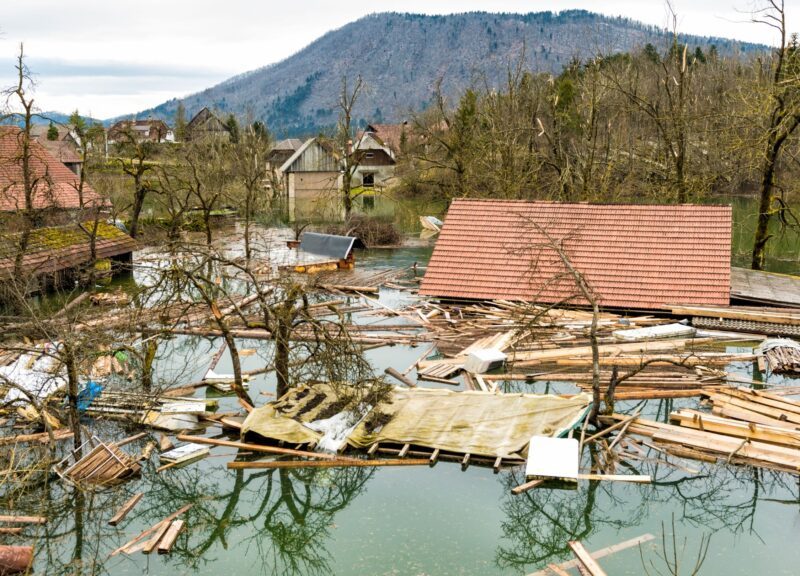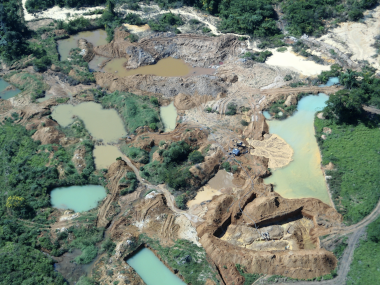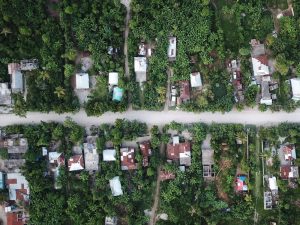One year ago, from June to October 2022, a series of floods killed nearly 1400 people in Pakistan, while displacing another 33 million. But flooding is not new to the country. Growing up in Karachi, the biggest city in Pakistan, I recall watching on TV the flood that devasted the country in 2010, destroying homes, crops and infrastructure and affecting approximately 20 million people. Why is the country so prone to floods and other climate change-related events? And what does it mean for human security in Pakistan?
Why is Pakistan vulnerable to climate change?
In Pakistan, the annual monsoon season is a lifeline for the country, accounting for a staggering 70% of its yearly rainfall during the crucial months of July and August. This natural phenomenon is of utmost importance for the nation’s agricultural sector, providing essential water resources for irrigation, and powering its vital hydroelectric plants. However, Pakistan’s geographical positioning exposes it to a climatic tug-of-war, with the region experiencing both severe droughts and heatwaves on one hand, and torrential monsoon rains leading to potential flooding on the other. This is particularly common in areas along the Indus River. Adding to these concerns, climate change is exacerbating these weather patterns, with rising global temperatures contributing to increased evaporation and intensifying monsoon rainfall. A major worry for Pakistan is the state of its vast glaciers, particularly in the northern region, aptly referred to as the ‘third pole.’ These glacial reserves face imminent threats due to the warming climate, significantly impacting water availability in the country and posing grave risks to public health, agriculture, and water supplies.
Risks To Human Security in Pakistan
The devastating flooding in Pakistan poses a significant threat to human security, particularly for the country’s food and health security. Agriculture is the backbone of Pakistan’s economy: it contributes to approximately 24% of the country’s GDP, employs half of the country’s labour force and is the largest source of foreign exchange earnings. Anything that affects this economic sector directly affects people’s livelihood and causes a significant hindrance to their food supply. The latest series of floods did exactly that: it destroyed 10% of Pakistani land and wiped at least 3-4% GDP of the country. The flood affected all four of the country’s provinces, with southwestern Balochistan and southern Sindh being worst hit.
As a result, people have been forced to migrate from their rural villages to the Sindh highway, a major road linking the province of Sindh to other parts of the country, in search of shelter and a dry place to live. Nearly half a million peoplerelocated to makeshift Internally Displaced People (IDP) camps along the way. Unfortunately, the situation in these camps is dire, with the contaminated floodwater resulting in a surge of health issues among IDPs, including malaria, diarrhea, and other waterborne illnesses. For the 800,000 Afghan refugees who were already seeking shelter in Pakistan, the situation was particularly stark, as they once again lost their (temporary) homes and possessions due to the devastating floods.
Despite the efforts of organizations like UNHCR to provide emergency assistance, the situation for these all these refugees remains difficult and highlights the ongoing humanitarian crisis caused by the flood in Pakistan for some of its most vulnerable people. A UNDP Post-Disaster Needs Assessment estimates flood damages at over $14.9 billion, with economic losses exceeding $15.2 billion and reconstruction needs surpassing $16.3 billion.
Taking Actions and Moving Forward
The Pakistani government responded promptly to the devastating floods of 2022. The National Disaster Management Authority and Provincial Disaster Management Authorities coordinated relief efforts, and the Armed Forces assisted in rescue operations. IDP camps provided shelter and support, and compensation packages were given to farmers and livestock owners. The Pakistani government collaborated closely with international organizations such as the United Nations and multiple NGOs to extend additional aid.
But as Pakistan’s then Prime Minister Shehbaz Sharif declared shortly after the 2022 flood:
“Pakistan has never seen a starker and more devastating example of the impact of global warming … Nature has unleashed her fury on Pakistan without looking at our carbon footprint, which is next to nothing. Our actions did not contribute to this.” And he is correct. Although Pakistan is responsible for less than 1% of global greenhouse gas emissions, it is among the countries worst affected by extreme weather events due to climate change.
While several steps were taken to address the immediate impacts of the flood, the journey to recovery is far from over. As we contemplate the depth of this humanitarian crisis, let us recognize that every effort, no matter how small, can bring relief and hope to those struggling to rebuild their lives in the aftermath of the 2022 floods. The call for action remains urgent, as is the need to develop long-term solutions to prevent future climate-induced disasters and develop sustainable infrastructure.











